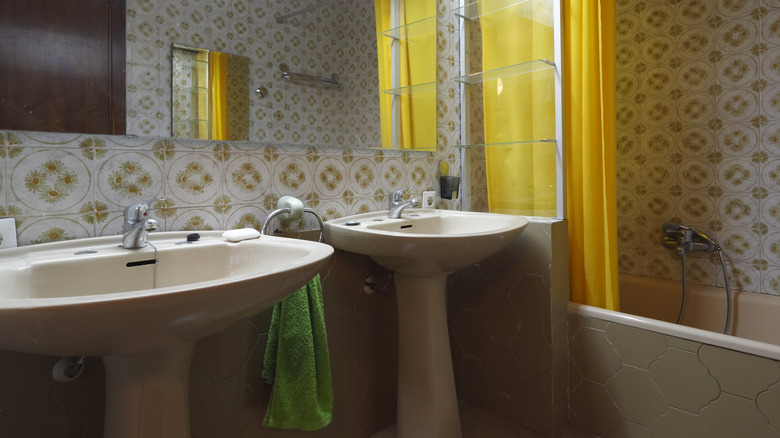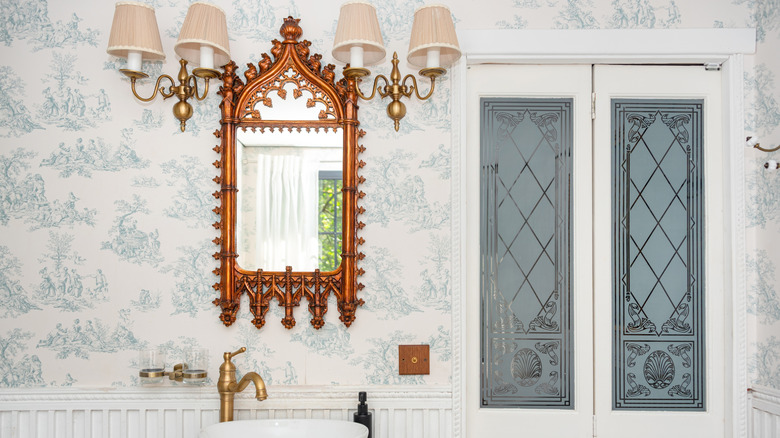Will Vintage Bathroom Features Hurt Or Help Your Home's Resale Value?
When it comes time to sell, many homeowners might assume that the best way to boost value is by remodeling, but the truth is not every upgrade will be worth taking on. While many potential buyers are persuaded by updated features and appliances, modern styles aren't always a selling point. Home design trends are starting to reflect popular styles from the past and veer away from ultra-contemporary details. Certain factors and changes in the market give reason to why vintage, old homes are now more expensive than new ones, and these shifts might lead us to question whether or not a shiny new renovation is going to affect our home sale positively.
It may seem like a gray area when it comes to the bathroom, considering it's typically a space where cleanliness and functionality are key, and not every vintage layout will stand up to the task. That said, retro bathrooms are making a big comeback in particular, and real estate professionals believe that vintage features could be a key selling point to raise resale value if they've been properly maintained.
Not every dated feature will be worth keeping around for the sake of resale value, but taking certain factors into consideration can help you determine whether or not something is worth preserving. Renovations can be costly and time-consuming, so it's always best to take a thoughtful approach to a potential bathroom makeover to make sure it's worth it in the long run.
Well-preserved vintage features may boost value
Vintage features are making a major comeback in home trends today, as homeowners are seeing more value in designs that provoke nostalgia or offer a unique sense of character. Although the desire for retro style is on the rise (especially in bathrooms), certain details may not have sustained their charm. Take bold '80s bathrooms, for example — this aesthetic is having a huge resurgence, but that doesn't mean buyers will find the carpeted trend appealing after it's been sitting around in a bathroom for decades. The maintenance of vintage features will have a key impact on whether or not it generates more interest on the market.
Another factor is the popularity of the feature itself, so you'll want to rethink the bathroom trends that are completely outdated, like a glass block partition — it may be retro, but it's not necessarily desirable. Designers are noticing a rising demand for certain styles from the past, like clawfoot tubs, vintage tiling, or classic copper fixtures. That said, they aren't likely to impress if they're showing visible signs of damage. Some designs from the past may feel too unique to be considered valuable to the average buyer, but there is a niche market they're bound to appeal to. Many sellers are noticing that there's actually a sizable community of buyers who are willing to pay more and purchase quickly if a home has kitschy bathroom features, especially colorful fixtures, unique tiles, and appliances that scream retro.
How to build value with vintage bathrooms
Making a value-minded decision for your remodel isn't as black and white as jumping into a full overhaul or leaving an outdated room exactly the same. To generate the most value for your home's resale, aim for a balanced approach — whether that's following tips for freshening up a vintage 1960s bathroom without losing the charm or making a few thoughtful swaps throughout your design.
If the rest of your home has been updated to fit a more modern aesthetic, a decades-old bathroom design might disrupt the overall flow of your space and distract buyers. Real estate professionals note that in order for vintage bathroom features to build resale value, they need to make sense in the overall context of the property. For instance, if your home leans towards a more classic and neutral style, you may want to gut the '80s pink plumbing features while preserving areas with quality craftsmanship like an antique light fixture or brass hardware.
You'll also need to assess which features are past their prime. It's best to remove features that are no longer functional or too complicated to repair, like corroded faucets, but you should replace them with vintage-inspired pieces to maintain the aesthetic alongside what you're choosing to preserve. Certain historical details — like tile work, antique mirrors, or an original tub — can increase appeal, but you may need to make minor repairs. The key is to ensure your bathroom is convenient for modern-day living while amping up the character with well-preserved vintage elements.


